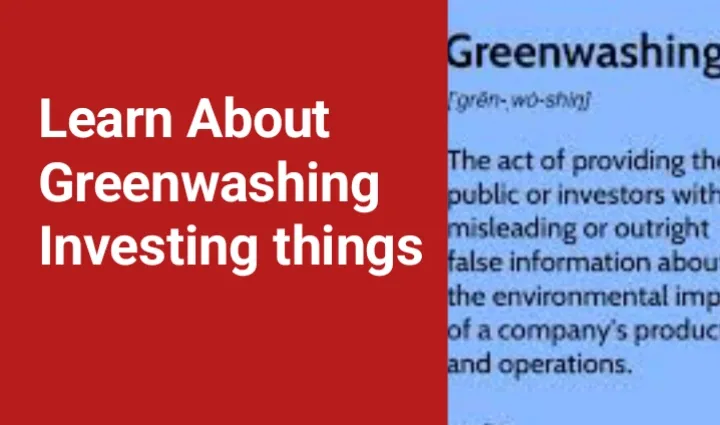In recent years, sustainable investing has gained significant momentum as investors increasingly consider environmental, social, and governance (ESG) factors alongside financial returns. if you want know what does greenwashing mean in sustainable investing that As this movement towards responsible investing has grown, so has the need to be vigilant against a deceptive practice known as greenwashing. In this article, we will delve into what greenwashing means in the context of sustainable investing and why it is crucial for investors to recognize and combat it.
Greenwashing Defined
Greenwashing refers to the misleading or deceptive marketing and branding efforts employed by companies and organizations to make their products, services, or activities appear more environmentally friendly or socially responsible than they actually are. This practice can also extend to investments, where companies or funds exaggerate or misrepresent their ESG credentials to attract socially conscious investors.
The Danger of Greenwashing
Greenwashing poses a significant threat to the integrity of sustainable investing. It can lead investors to allocate their capital to companies or funds that do not align with their ethical or sustainable goals. When investors unknowingly support such entities, they may inadvertently perpetuate harmful practices while believing they are making a positive impact on the environment or society.
Common Greenwashing Tactics
- Vague or Ambiguous Language: Companies often use vague terms such as “eco-friendly,” “green,” or “sustainable” without providing specific details or evidence to back up their claims. These terms can be misleading and lack transparency.
- Cherry-Picking Data: Some entities highlight positive ESG aspects while conveniently omitting less favorable information. This selective disclosure can distort the overall picture of a company’s sustainability efforts.
- Misleading Imagery: The use of nature-themed imagery or green symbols can create the illusion of eco-friendliness. For example, a company might adorn its packaging with images of leaves or trees to suggest environmental responsibility, even if its practices do not align with this image.
- False Certification: Companies might claim to have received certifications or awards related to sustainability, which upon closer inspection, are either non-existent or not relevant to their actual practices.
How to Spot Greenwashing
To protect themselves from greenwashing, sustainable investors should adopt a critical mindset and perform due diligence. Here are some strategies for identifying and avoiding greenwashing:
- Research Thoroughly: Investigate the company or fund’s sustainability claims, looking for concrete evidence of their ESG efforts and impact.
- Check Third-Party Ratings: Rely on reputable ESG rating agencies and indices, such as MSCI ESG Ratings or the Dow Jones Sustainability Index, to verify a company’s sustainability performance.
- Scrutinize Financial Disclosures: Analyze a company’s financial reports and disclosures to assess whether their sustainability practices align with their public statements.
- Engage with the Company: Consider reaching out to the company or fund managers to ask questions about their sustainability practices and goals. Genuine companies are usually transparent and willing to provide information.
